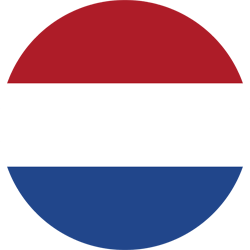Wij gebruiken cookies om uw ervaring beter te maken. Om te voldoen aan de cookie wetgeving, vragen we uw toestemming om de cookies te plaatsen. Meer informatie.
New population of Phoenix theophrasti found in Palea Epidavros, Greece moves the species northernmost distribution limit

Troy Doedens, 2017 New population of Phoenix theophrasti found in Palea Epidavros, Greece moves the species northernmost distribution limit
Phoenix theophrasti was first described in 1967 from the now famous grove in Vai, Crete (Greuter, 1967). Since then nine coastal populations of Phoenix theophrasti have been identified growing in Crete on moist valley floors, stream banks and on coastal rocks and cliffs. Common to all these sites is that they are situated near the sea at 0-230m altitude. Natural populations of Phoenix theophrasti are also known from four localities in Turkey. However, the population at Gölköy near Bödrum seems to have significant morphological differences in having a longer inflorescence peduncle, compared to the other populations on Crete and Turkey (Boydak et al., 1995). Until now, the Gölköy population was thought to be the northernmost natural distribution of the species at 37° 4'54.79"N. However, in recent years a new population was described by Thymakis (2009) and Greek palm enthusiasts near Palea Epidavros, Greece, at 37°38'29.20"N; this is about 60 km further north than Gölköy.
Palea Epidavros (also called Palaia Epidavros, Palea Epidaurus, Palaia Epidaurus, Ancient Epidavros or Archaia Epidaurus; Figure 1) was a city in the large kingdom of Epidavros that dates back as far as the Mycenean period (1600-1450 BC). Palea Epidavros has two bays; in ancient times the southern bay was used as a trade harbour and the northern bay for military purposes. Part of the old city is now flooded and can still be seen under sea level. A small theatre that originates from 400 BC can still be seen on the peninsula between the two bays. Now Palea Epidavros is a small fishing and tourist village with around 1600 inhabitants (2011). Just north of the city lies a small beach called Vagionia beach, here a small natural population of eight mature female and one juvenile trees of Phoenix theophrasti var. Epidaurus can be found (Figure 2, 5). A second, even smaller population (Figure 3, 7) of four mature trees (3 male and 1 female) were found near the harbour on a uncultivated field and a third population of ten trees (all male) on a slightly higher altitude (80m) behind the town (Figure 4, 8). The three locations are most likely remnants of a much larger ancient palm forest. Locals confirmed that these populations were much larger in the past, and they have been around since they can remember.

Figure 1: Palea Epidavros, Phoenix theophrasti var. Epidaurus population 1 on Vagionia beach, population 2 near the harbour and population 3 on the hill behind the town

Figure 2: Population 1 on Vagionia beach consists of 8 mature and 1 juvenile Phoenix theophrasti var. Epidaurus

Figure 3: Population 2 near the harbour consists of 4 mature Phoenix theophrasti var. Epidaurus
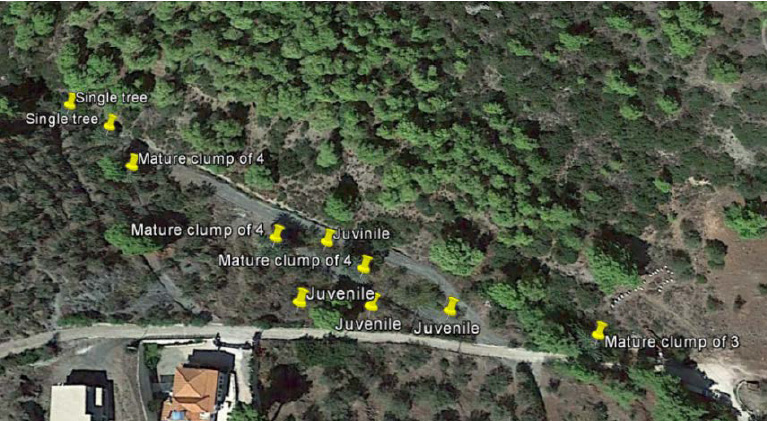
Figure 4: Population 3 behind the ancient town centre 6 mature Phoenix theophrasti var. Epidaurus
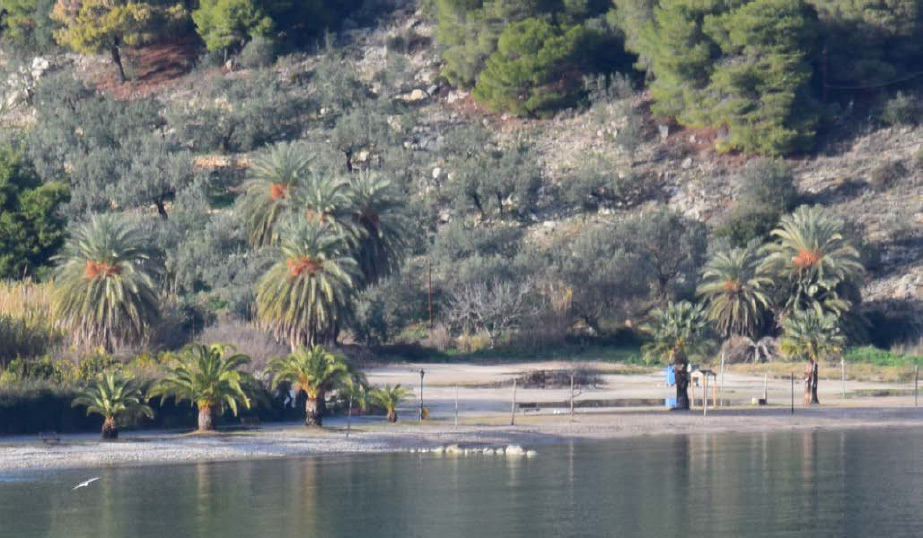
Figure 5: Population 1 on Vagionia beach Overview of 8 mature Phoenix theophrasti var. Epidaurus
Population 2 used to be right on the beach until the harbour was expanded in the nineties. Ancient pottery decorated with figures of date palms found in the region contributes to the idea that Phoenix palms were much more common in this region in ancient times. Today, many other palms including Phoenix canariensis and Phoenix dactylifera are planted in and around the town. These were planted in the nineties when tourism became more important for the town.
The Palea Epidavros population distinguishes itself from the Crete populations on multiple morphological characteristics: they are smaller in almost all vegetative parts, trunk height and diameter, leaf and leaflet length. However, fruits and seeds appear to be slightly larger; fruit 1.9cm compared to 1.5cm, seed 1.6cm compared to 1.1-1.3cm (Figure 6).
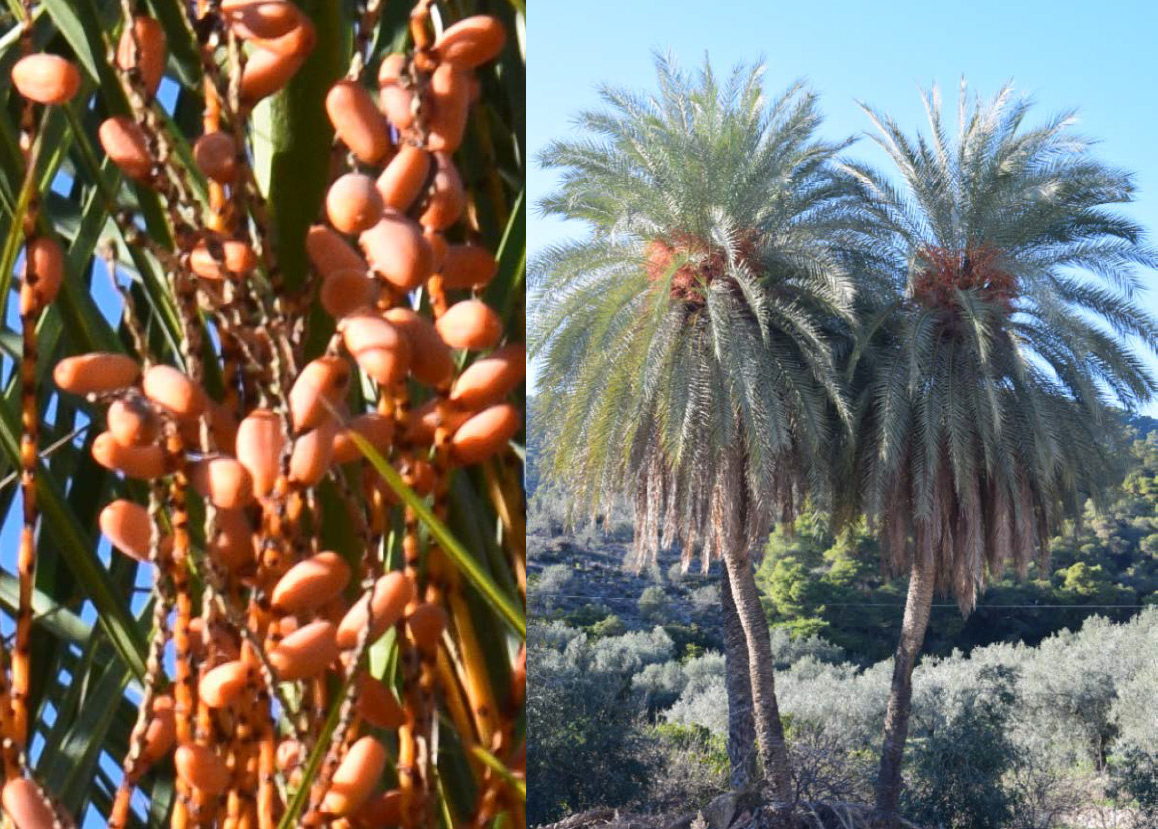
Figure 6: Population 1: Vagionia beach, left: Fruit. right: Clump of 3 mature female trees
Description Phoenix theophrasti var. Epidaurus
Clustering, heavily armed palm, TRUNK. to 8m high, diameter 39cm, with persistent old leaves underneath the crown, trunk covered with densely packed diamond-shaped leaf bases 20-23cm wide 3.5-5cm high, usually with a large root boss 1-1.20m high. LEAVES. silvery blue-green, slightly arching, 80-130 in the crown, sheath 43-50 x 20cm, petiole 60-70cm, rachis 2.80-3.20m, orange to yellow spines length near petiole 4cm to 37.5cm near leaflets, leaflets reduplicate 97 on each side of the rachis, very stiff with a sharp tip, irregularly arranged in groups of 2 near petiole to 3 to the leaf end, leaflet length near petiole 35-42.5cm middle 35-39cm near leaf end 30cm width 1.5cm. STAMINATE INFLORESCENCE. yellow to white, peduncular bracts 1-1.20m with 1 split, peduncle 41-49cm, divided into 1 order, rachis 44cm, rachilla 8.5-21cm. PISTILLATE INFLORESCENCE. orange, erect, peduncular bracts length 52cm splitting in two, peduncle 35-69cm, divided into 1 order, rachis 20-39cm, rachilla 14-62cm FRUIT. 1.9 x 1 x 0.8cm. SEED. 1.6 x 0.8 x 0,7cm.
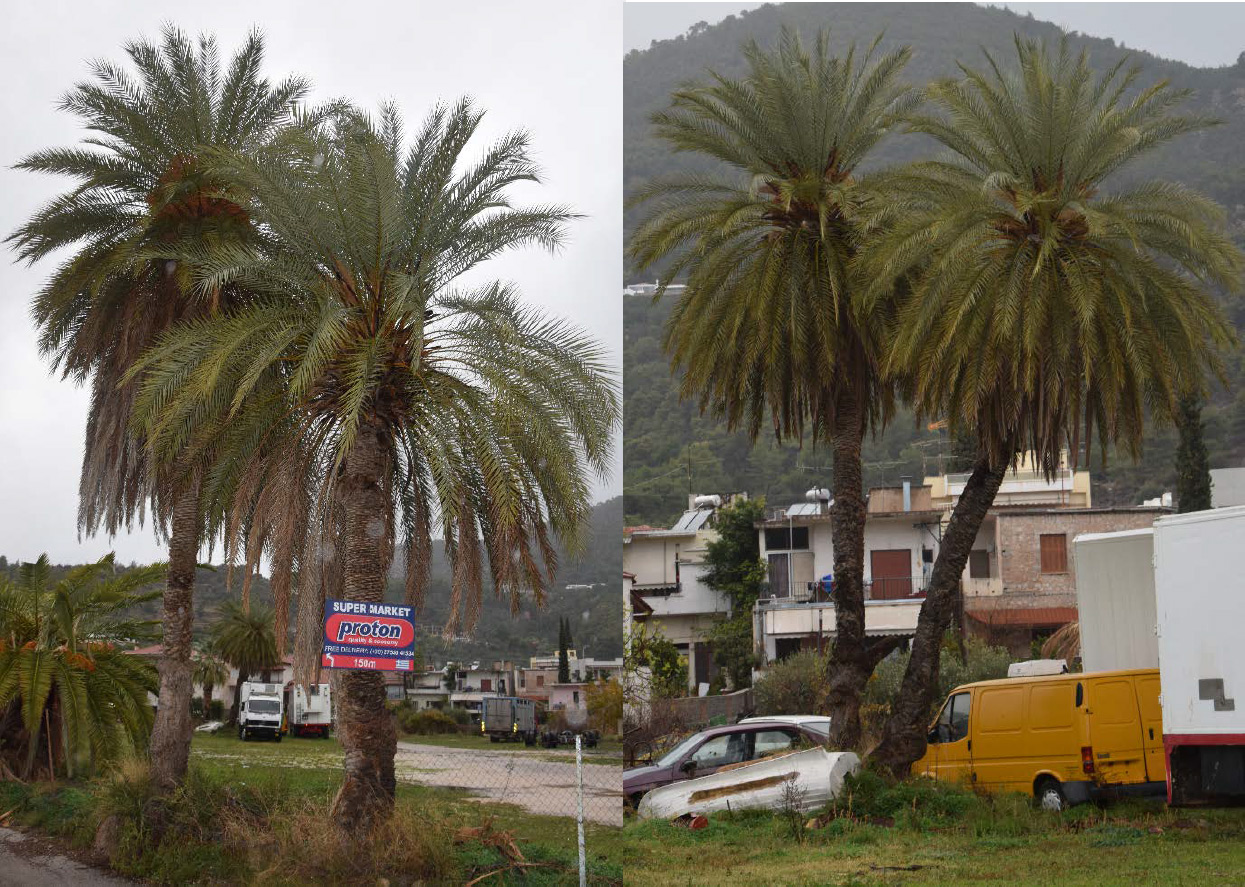
Figure 7: Population 2 near the harbour. Left: Male tree in front with a female tree behind. Right: Two mature male trees
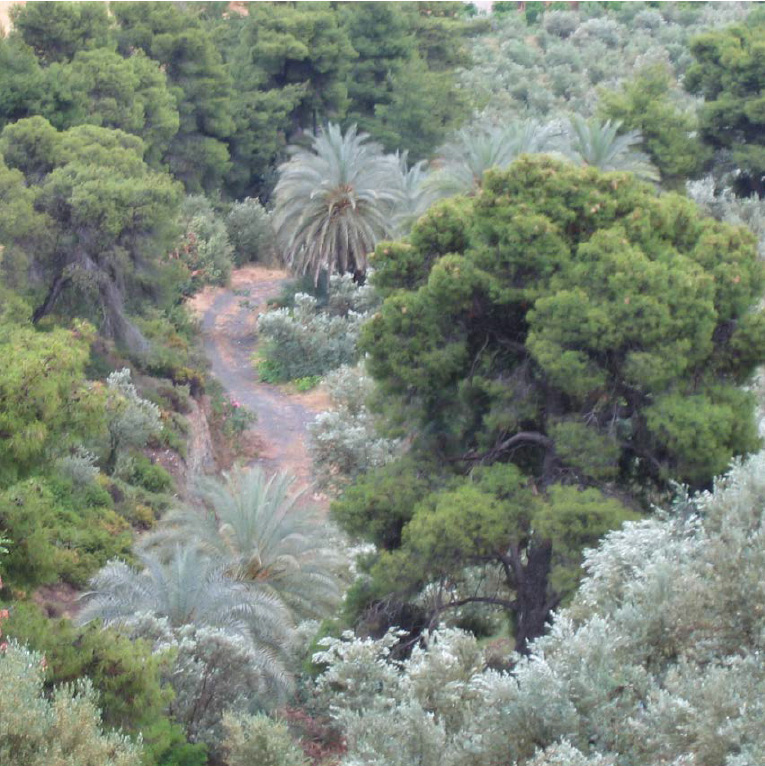
Figure 8: Population 3: Overview of Phoenix theophrasti var. Epidaurus on the hill above Palea Epidavros
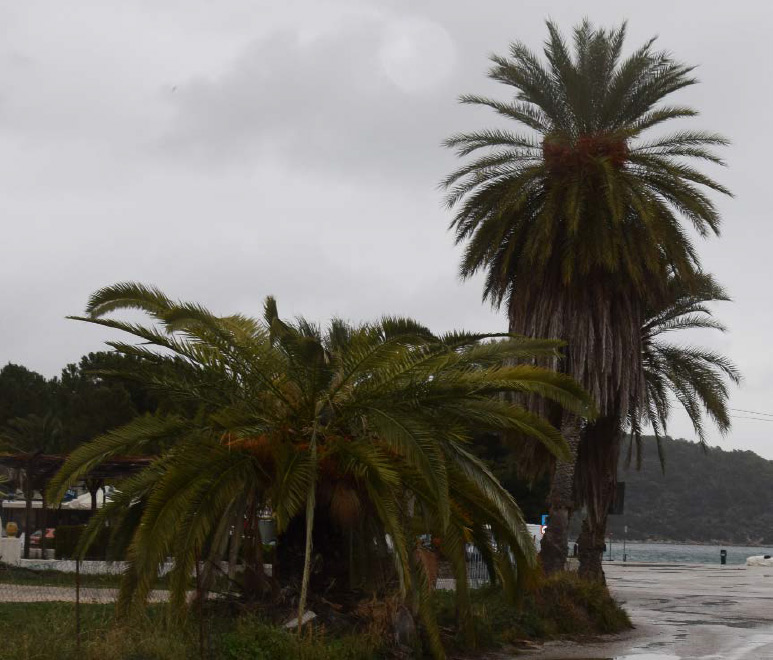
Figure 9: Population 2: In front: Female Phoenix canariensis damaged by the red palm weevil. Behind: The only true to type seed producing female Phoenix theophrasti var. Epidaurus
Conservation
Conservation of the Palea Epidavros Phoenix theophrasti will be difficult because the populations are small. Population 1 on Vagionia beach consists of only female trees therefore almost no seeds are present in the fruits. Only one tree that is situated close to a male planted Phoenix canariensis produces few viable seeds. Unfortunately one must assume that these seeds must be hybrid and this female palm is located on private property. Population 2 is also located on private property, and the only female tree in this population is standing just meters away from a male, thus producing viable seed. However, depending on the lineage of both parents and because of the likelihood of sib and half-sib crosses inbreeding depression is likely to become an issue in future offspring. Albinism and other signs of inbreeding depression were already found in the offspring of this tree. Population 3 on the hill above the town consists of only male trees thus also lacking generative multiplication. Additionally, many of the planted Phoenix palms in the town have already died due to damage caused by the larvae of the red palm weevil (Rhynchophorus ferrugineus; Figure 9). The only possible way to conserve this fragile population is by rapid human intervention. Pollen from the male palms of population 2 and 3 could be used to manually pollinate the female palms at Vagionia beach. Removal of Phoenix canariensis palms around town, or at least on Vagionia beach would reduce hybridization, so that true to type seed could be produced. A notable amount of at least 6 juvenile Phoenix theophrasti palms are planted near hotels in the southern part of Palea Epidavros. It is likely that these palms originated from one of the three local populations and could help in preserving these palms. It is crucial for the survival of these palms that they are brought into cultivation and spread to palm enthusiasts.
Climate
The bay of Palea Epidavros has relatively cool summer temperatures compared to the surrounding regions, the bay of Palea Epidavros is therefore very green and suited for Citrus cultivation. In winter the temperature can drop well below freezing when there is a north eastern wind (Hellenic national metreorological service, 2017). Palea Epidavros receives occasional snowfall in December and January (Figure 10). December is the wettest month with 66mm of precipitation. This could make the Phoenix theophrasti var. Epidaurus a suitable candidate for cultivation for ornamental purposes in colder regions.

Figure 10: Population 2 near the harbour in December, 2 mature male trees with snowy hills on the background
References
Greuter, W., 1967. Beitrlge zur Flora der Siiddglis
Thymakis, N., 2009, Phoenix theophrasti Greek Edition of the Red Data Book (University of Patras)
Boydak, M., Barrow, S., 1995. A new locality for Phoenix in Turkey: Gölköy-Bödrum
Hellenic national metreorological service, 2017. Climatalogy Peloponnese
Troy Doedens, Coldpalm.nl, 2017
*Photographic copyrights on all pictures
